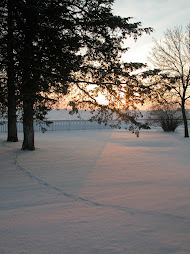It was interesting to see how suburban waterfowl set aside innate fear for humans when doing so meant large clumps of soft food would be scattered near their webbed feet. The ducks would get aggressive with one another in pursuit of the bread and, sometimes, the geese would act aggressively toward us. The boys and I learned quickly to keep a safe distance from the geese; unlike the ducks, geese would bite the hands that were feeding them.
This wariness of geese grew within my young sons to become a phobia. Pretty soon, any scary place in the home – the basement, for instance – became scary because it was populated by geese. By the time my boys neared the age of three, they’d convinced themselves there was no going downstairs. Whenever I’d try to get them to go downstairs, they’d stand near the top step and with tears in their eyes, proclaiming: “Geese! Geese!”
I tried to explain how they were just imagining; there weren’t real geese in our basement. But logic was pointless. The geese existed; I just wasn’t seeing them.
One day, I decided I needed to see these geese in order to eradicate them from our home. I grabbed a grocery bag and a boy, and together we headed downstairs. “Show me the geese, because I’m going to throw them away,” I said to my son. He quivered and pointed to an empty spot near the window. “There,” he said. I walked over to the spot, wrapped my arm around air, lifted his imaginary goose, and put it into the bag. “Are there more?” I asked. There were, about six of them, all which I carefully lifted and placed into the bag.
When I’d finished clearing the basement of the imaginary geese, which for weeks had threatened my young sons’ security, I closed up the bag (the empty bag) and walked it out to the trash bin. We never had a goose problem in our house after that but we gained a wonderful story to add to our children’s life narrative.
Now that the boys are adults, they are reminded about the time scary geese inhabited their imaginations (and our house) whenever they see a flock of geese overhead. For years, I thought the act of carrying all the geese to the curb in a brown paper bag was the end of their disdain for geese.
I was wrong. Yesterday, these pictures showed up in my email inbox.









